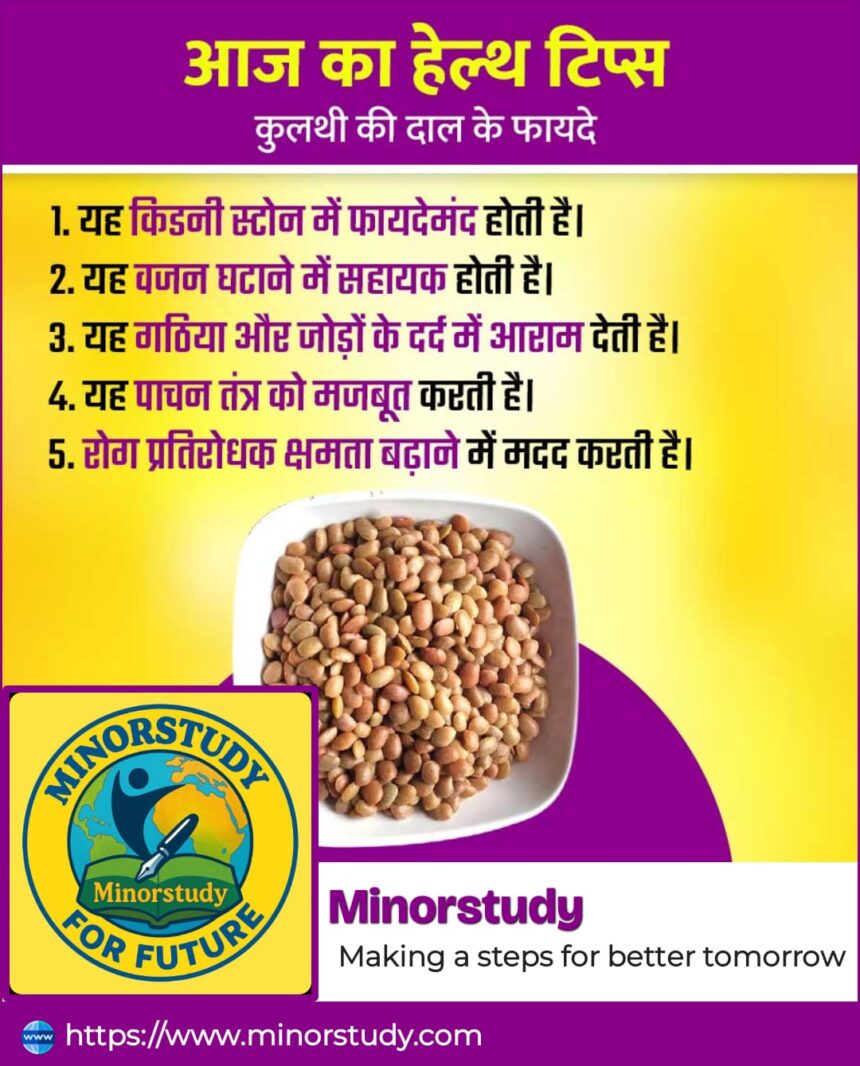5 Shocking Benefits of Horse Gram Dal You Can’t Ignore – A Life-Changing Superfood
In today’s world of fast food and sedentary lifestyles, our bodies crave nutrition-packed natural foods. One such underrated yet potent superfood is Horse Gram Dal – locally known as Kulthi, Kulith, or Madras Gram in India. This humble legume, once a staple in rural households, is making a comeback due to its astonishing health benefits and nutritional value. Known for being protein-rich, fibrous, and thermogenic, horse gram has earned the title of a “super pulse” in Ayurvedic and folk medicine traditions.
- 🔍 History and Origin of Horse Gram
- 🌱 Nutritional Profile of Horse Gram
- 🌟 5 Amazing Health Benefits of Horse Gram Dal
- 1. 💧 Kidney Stone Relief
- 2. ⚖️ Weight Loss and Fat Reduction
- 3. 🦴 Relief in Arthritis and Joint Pain
- 4. 🌿 Strengthens the Digestive System
- 5. 🛡️ Boosts Immunity
- 📅 Timeline of Horse Gram Usage
- 🎯 Significance in Modern Life
- 🙏 Cultural and Traditional Observance
- ❓ Frequently Asked Questions (FAQs)
- Q1: Can horse gram be eaten daily?
- Q2: Is horse gram good for diabetes?
- Q3: How can I include horse gram in my diet?
- Q4: Can pregnant women eat horse gram?
- 🎁 Wishing You Health and Strength
- 🧠 Important Takeaways
- 🧾 Conclusion: A Forgotten Hero for Daily Health
In this comprehensive guide, we’ll explore the history, benefits, facts, FAQs, significance, timeline, cultural importance, and daily life impacts of this ancient lentil. By the end, you’ll understand why including horse gram dal in your diet could be one of the best health decisions you ever make.
🔍 History and Origin of Horse Gram
Horse gram (Macrotyloma uniflorum) is one of the oldest pulses cultivated in India and parts of Southeast Asia. Archaeological evidence shows its use in Indian diets dating back to 2000 BCE. It was primarily used as cattle fodder – especially for horses, which gave it the name “horse gram” – but later recognized for its human health benefits.
Ancient Ayurvedic texts like Charaka Samhita and Sushruta Samhita mention horse gram as a “medicinal pulse” used to treat kidney ailments, coughs, digestive issues, and weight problems.
🌱 Nutritional Profile of Horse Gram
Here’s what makes horse gram dal a power-packed food:
| Nutrient | Value per 100g (raw) |
|---|---|
| Protein | 22-25g |
| Fiber | 5-7g |
| Iron | 6.8mg |
| Calcium | 287mg |
| Phosphorus | 311mg |
| Carbohydrates | 57g |
| Fat | 0.5g |
| Antioxidants | High |
It is gluten-free, low in fat, and rich in complex carbohydrates and essential amino acids – ideal for modern-day health challenges like diabetes, obesity, and metabolic syndrome.
🌟 5 Amazing Health Benefits of Horse Gram Dal
1. 💧 Kidney Stone Relief
Horse gram has natural diuretic properties. When boiled and consumed with the water, it helps dissolve and expel kidney stones. Ayurvedic practitioners recommend horse gram water to support renal function and flush toxins.
Tip: Boil horse gram and drink the strained water on an empty stomach for better kidney health.
2. ⚖️ Weight Loss and Fat Reduction
It generates heat and speeds up metabolism. The fiber in horse gram keeps you full, reducing cravings and aiding in weight loss. It targets belly fat and stubborn fat deposits effectively.
Tip: Use sprouted horse gram in salads or make soup for a high-protein, low-calorie meal.
3. 🦴 Relief in Arthritis and Joint Pain
Its anti-inflammatory properties soothe joint pain and stiffness, especially in arthritis and rheumatism. It’s rich in iron and calcium which strengthen bones and joints.
Traditional use: Soaked horse gram water is given in winters to manage arthritis flare-ups.
4. 🌿 Strengthens the Digestive System
Horse gram is a natural digestive stimulant. It prevents constipation, bloating, and acidity. Its high fiber content promotes gut health and bowel regularity.
Fun Fact: In rural India, horse gram is a common home remedy for indigestion and gastric issues.
5. 🛡️ Boosts Immunity
Packed with antioxidants, iron, and polyphenols, horse gram dal boosts immunity, improves hemoglobin levels, and fights fatigue. It builds resistance against seasonal infections and inflammation.
Ayurveda Insight: Regular consumption is believed to “balance Kapha and Vata doshas.”
📅 Timeline of Horse Gram Usage
| Period | Use & Significance |
|---|---|
| 2000 BCE | Used as fodder and emergency human food |
| 1000 BCE – 200 CE | Ayurvedic texts record medicinal use |
| Medieval Era | Consumed in rural diets, especially in drought-prone areas |
| 20th Century | Labeled as “poor man’s pulse,” declined in urban diets |
| 21st Century | Regaining fame due to high-protein, vegan, and superfood movements |
🎯 Significance in Modern Life
✅ For Diabetics:
The complex carbs and high fiber control blood sugar spikes. It has a low glycemic index.
✅ For Women:
Rich in iron and calcium, it prevents anemia and supports hormonal health.
✅ For Students & Professionals:
Boosts energy levels, enhances mental focus, and improves stamina.
🙏 Cultural and Traditional Observance
In many Indian households:
Horse gram is consumed on Sankranti for warmth and strength.
In Tamil Nadu, it is prepared as “Kollu Rasam” for sore throats.
Rural Maharashtra and Andhra Pradesh use it during winter fasting days.
Ayurvedic View: Horse gram balances Kapha and Vata doshas. It is considered “Ushna” (heaty), so ideal in winter or cold weather.
❓ Frequently Asked Questions (FAQs)
Q1: Can horse gram be eaten daily?
Yes, but in moderation. Due to its heat-inducing nature, consume 3–4 times a week, especially in winter or monsoon.
Q2: Is horse gram good for diabetes?
Absolutely. Its low glycemic index helps regulate blood sugar levels.
Q3: How can I include horse gram in my diet?
Soups (Kollu Rasam)
Sprouted salads
Horse gram dosa/idli
Stews and curries
Parathas or cheelas
Q4: Can pregnant women eat horse gram?
Consult a doctor. It’s generally avoided during early pregnancy due to its heat-generating nature.
🎁 Wishing You Health and Strength
May your body be your temple and your food its sacred offering. By including superfoods like horse gram dal, you’re not just eating, you’re healing. 🌱
“Let food be thy medicine and medicine be thy food.” – Hippocrates
Here’s to a stronger body, sharper mind, and a lighter spirit – naturally.
🧠 Important Takeaways
Horse gram is a nutrient-dense pulse with numerous health benefits.
It’s an ancient food rooted in Ayurveda and Indian tradition.
A natural remedy for kidney stones, obesity, arthritis, and immunity.
Easy to cook and integrate into modern meals.
Powerful impact on daily energy, digestion, and wellness.
🧾 Conclusion: A Forgotten Hero for Daily Health
Despite its humble origins, horse gram dal is a treasure trove of healing, nutrition, and tradition. Often overlooked in modern kitchens, this pulse has the power to transform health when consumed regularly and mindfully. With its wide range of benefits – from dissolving kidney stones to boosting immunity – it’s no surprise that modern nutritionists and ancient Ayurvedic texts alike hold it in high regard.
It’s time we bring back this life-enhancing superfood into our diets – not just for ourselves, but for a healthier society and future generations.








